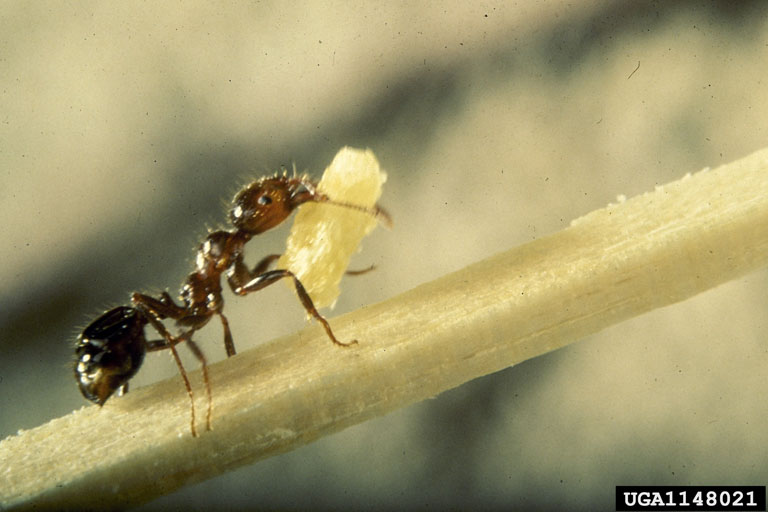 Among the common questions I receive about fire ants include questions on how to control them within vegetable gardens, compost bins and (increasingly) chicken coops.
Among the common questions I receive about fire ants include questions on how to control them within vegetable gardens, compost bins and (increasingly) chicken coops.
My favorite tool for fire ant control is use of fire ant bait broadcast over the entire home lawn and landscape. This is an inexpensive and environmentally friendly way to keep fire ants away. To learn more about this, check out the Texas Two-Step Method factsheet. However, the most commonly available baits do not allow direct use in vegetable gardens or many areas with livestock. I suppose the EPA is concerned about baits falling into vegetables, like lettuce, and being directly consumed by people or livestock. Fortunately, there is a simple alternative.
In most cases the simplest way to get fire ants out of a small- to medium-sized garden, compost bin or chicken coop is to apply a fast acting fire ant bait around the outside perimeter of the site. This should be a legal application for all fire ant baits (check your label to be sure), and since fire ants do not pay much attention to garden edges or fences, the inside ants will readily pick up bait from the surrounding ground. Yes, the bait does end up inside the garden or livestock area anyway, but only inside the fire ant nests, where there is no risk of it being picked up by chickens or contaminating leafy vegetables.
For larger gardens or crop and pasture land where perimeter treatments might be less effective, several fire ant baits may be used. Spinosad and abamectin-containing baits generally allow garden application (e.g., Clinch®, Fertilome® Come and Get It, and Payback®). In addition, Extinguish® (but not Extinguish Plus) fire ant bait containing methoprene has a label that allows use on cropland, pastures and rangeland. Extinguish® is an excellent long-term control option, especially in larger sites; but it is too slow for most gardeners, requiring approximately two months for maximum control. Avoid applying any of these baits to areas where poultry or other fowl are actively foraging.
In addition to baits, mounds can be treated directly with any of several mound drenches labeled for use in gardens. The eXtension website contains recommendations for a two-step (bait and mound treatment) approach to fire ant control in both conventional and organic vegetable gardens.
Alternatively, ant colonies inside a vegetable garden, chicken coop or compost bin can sometimes be successfully removed with a shovel and a straight-sided 5 gallon bucket. To keep the fire ants from climbing the shovel handle or escaping the bucket, liberally dust both shovel handle and bucket insides with talcum powder. The talc will keep fire ants in for a short while. Shovel quickly and go deep to attempt to remove the queen(s). Once the nest is contained in the bucket, it can be dispatched by flooding with soapy water. Or you can surreptitiously dispose of it in the backyard of a pesky neighbor (just kidding).
Appreciation to Dr. Paul Nester (Texas A&M AgriLife) for supplying some of the information used in this post.